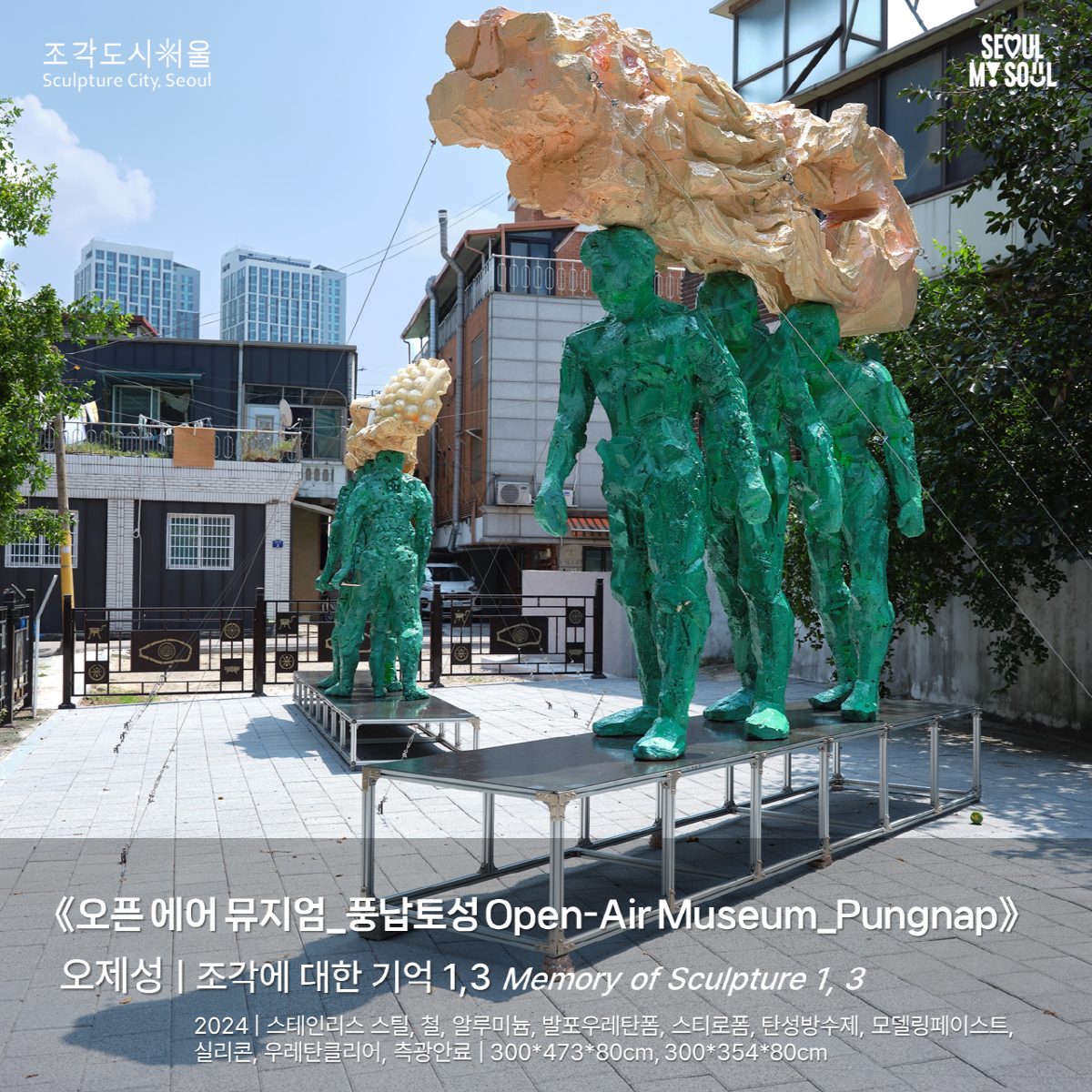

이러한 시도는 결국 조각의 범주로 환원되며, 조각이 조각으로서 성립하게 하는 기본 토대들을 분해하고 재조립하는 과정을 반복한다. 작가는 과거로부터 물려받은 조각의 유산을 해체하고, 새로운 형태의 조각이 가능할지에 대해 자신의 작업에서 계속해서 갱신하며 나아간다.
오제성의 작품은 선대에서 당대까지 조각의 이질적인 재료와 기법을 한데 뒤섞어 전통과 현대의 공존을 모색한다. 관람객들은 이 작품에서 단서를 얻을 수 있다. 풍납동은 토성으로 둘러싸인 역사적인 공간이지만, 시멘트로 덮인 채 펜스가 쳐져 있는 현재의 모습에서는 유적지로서의 흔적을 찾기 어렵다. 오제성의 작업은 과거의 한성 백제의 모습을 떠올리며 단절된 과거에서 연속된 현재로 잇는 상상력을 자극한다.
Oh’s attempts ultimately revert to the category of sculpture, and he repeatedly dismantles and reassembles what constitutes a sculpture. He dismantles the sculptural legacy inherited from the past and continually renews and advances his practice to explore the possibilities of new forms within sculpture.
Jeisung Oh’s practice seeks coexistence with tradition and contemporaneity by combining disparate materials and sculpture techniques from the past and present. Within Oh’s work, viewers can find small hints regarding the site. While Pungnap-dong is a historic area surrounded by earthen fortifications, it is now covered in cement and fenced off, making it difficult to discern its archaeological significance. Jeisung Oh’s work evokes the image of the Hanseong Baekje era, stimulating the imagination to bridge the fragmented past with the continuous present.